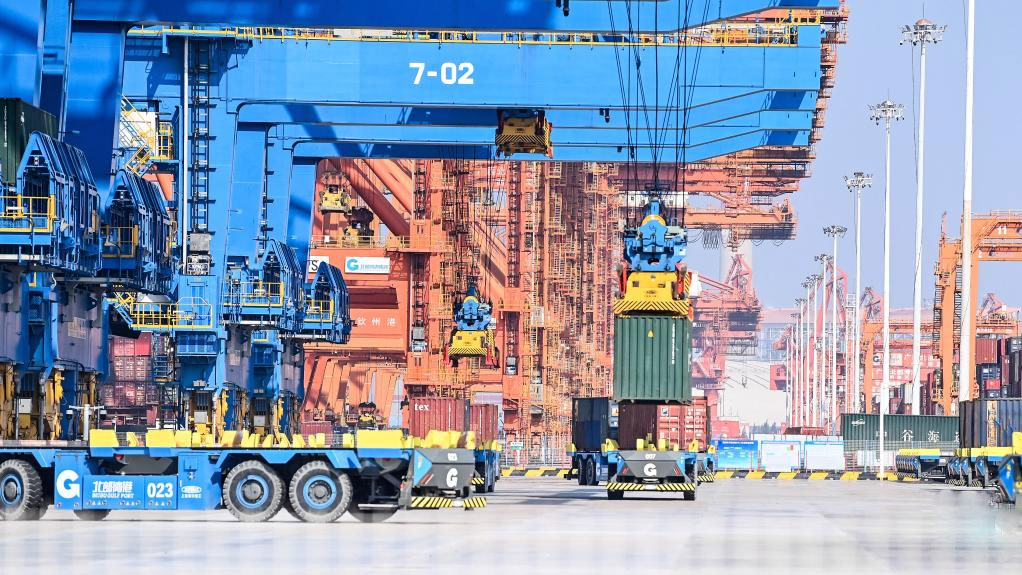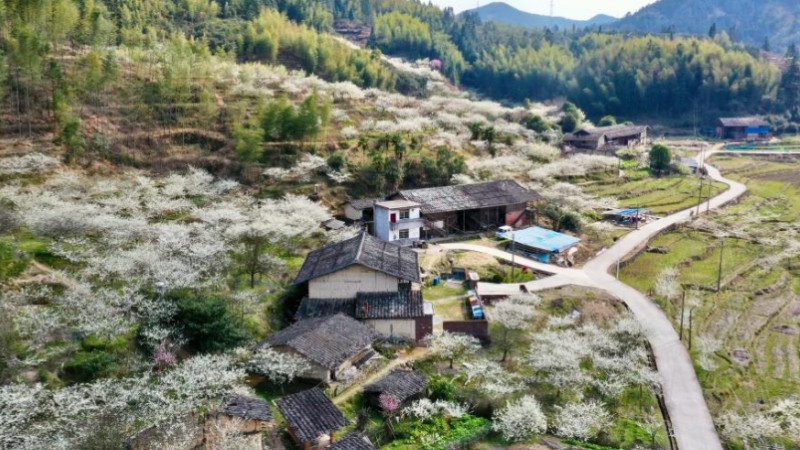Xi Story: Roads to happiness on "roof of the world"

Aerial photo taken on Sept. 30, 2022 shows the highway linking Pad Township in the city of Nyingchi and Medog County, southwest China's Tibet Autonomous Region. The 67.22-km road connects Pad Township in the city of Nyingchi and Medog County. (Photo by Dong Zhixiong/Xinhua)
LHASA, Feb. 27 (Xinhua) -- At the "two sessions" in 2013, Xi Jinping, general secretary of the Communist Party of China Central Committee, inquired about the road conditions in a far-flung county when talking with lawmakers from southwest China's Tibet Autonomous Region in a group deliberation.
"Is the road to Medog open now?" Xi asked Padma Chodron, a deputy to the National People's Congress, China's national legislature, from Medog County in Tibet.
Roads mean a lot to Medog, a county mainly inhabited by Monpa and other ethnic minority groups. Located deep in a valley in the Himalayas, Medog is besieged by high hills and primitive forests and remained "the last county without roads in China" until late 2013.
This isolated location, combined with underdeveloped transport, made it incredibly hard to reach the outside world. Locals knew the hardship too well -- they depended on porters and horses as their primary modes of transportation for centuries. Setting off on foot from her village, Padma endured a strenuous journey taking as long as six days via multiple means of transport to get to Beijing for the "two sessions" that year.

Aerial photo taken on Feb. 8, 2021 shows the entrance to the Galongla Tunnel in Medog County, Nyingchi of southwest China's Tibet Autonomous Region. (Xinhua/Sun Fei)
Padma was thus deeply touched by Xi's concern. "I told the general secretary that our highway would open by the end of that year, and he nodded delightedly in response," said Padma.
The Medog Highway, the first highway leading to Medog with a total length of 117 km, opened in October 2013. The remote county has since been connected more widely with the outside world, with vehicles and machines flowing in, children being able to go to school by bus, and patients being able to reach hospitals more quickly.
Recalling her interaction with Xi, Padma still felt heartened. "The general secretary listened to us attentively, taking notes and raising questions every now and then," she said, adding that the livelihood of people in Tibet is always on his mind.
Over the past decade, topics related to road transport, a hallmark of people's livelihood, have featured in multiple group deliberations and discussions that Xi took part in during the annual "two sessions."

Stitched aerial photo taken on July 6, 2021 shows a rainbow over the road linking counties of Mainling and Medog in Nyingchi, southwest China's Tibet Autonomous Region. (Photo by Dong Zhixiong/Xinhua)
Today, all the administrative villages in Medog are open to traffic. Data from Tibet's transport department showed that the total length of highways in the region has soared by more than 50,000 km over the past decade, with those in rural areas rising from 53,200 km to more than 90,000 km.
Medog bid farewell to absolute poverty in 2019. Residents of the county now profit from cash crops like loquat fruit and tea plants.
"With paved roads, our farm products have a viable way to reach the market nationwide," said Padma. "Our roads to happiness are becoming wider and wider."
Photos
Related Stories
Copyright © 2023 People's Daily Online. All Rights Reserved.









